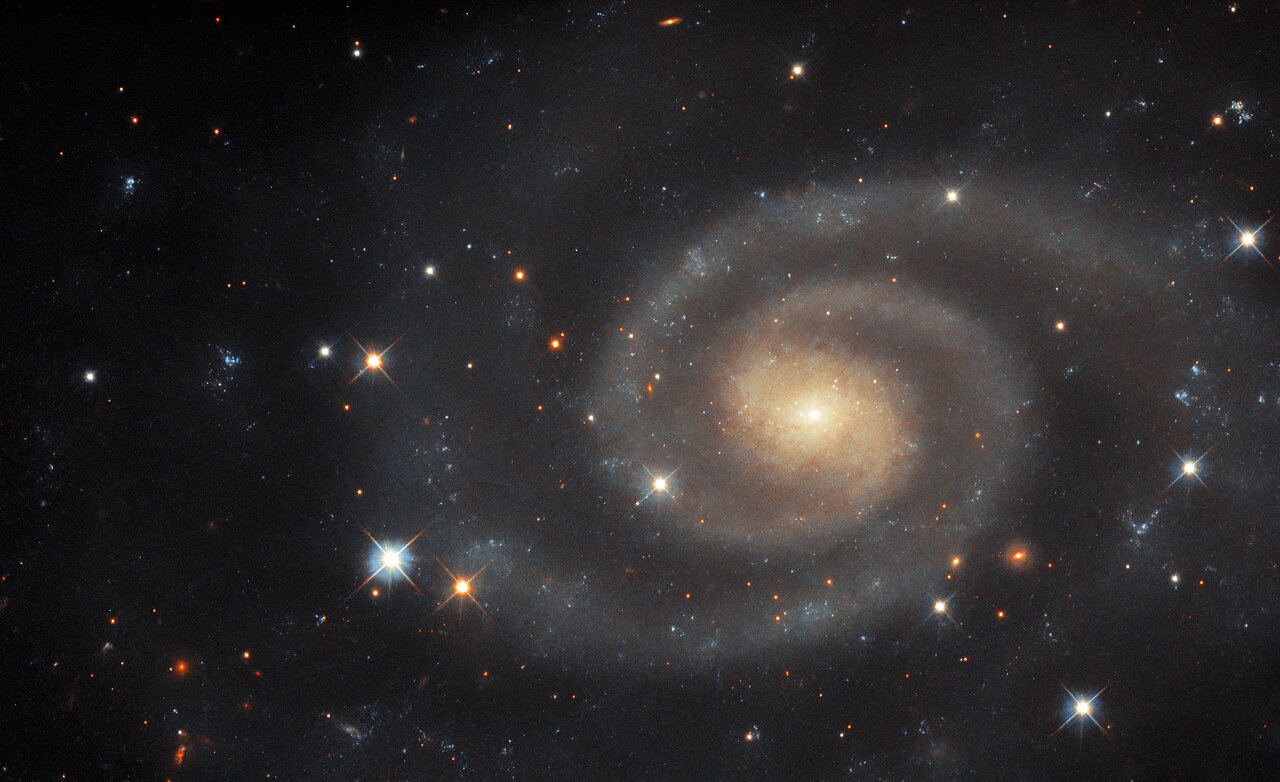Cosmos UGC 11105
This image of the spiral galaxy UGC 11105 is not as bright and vivid as some other Hubble Pictures of the Week. This softly luminous galaxy — lying in the constellation Hercules, about 110 million light-years from Earth — seems outshone by the sparkling foreground stars that surround it. The type II supernova which took place in this galaxy in 2019, while no longer visible in this image, definitely outshone the galaxy at the time! To be more precise, UGC 11105 has an apparent magnitude of around 13.6 in the optical light regime (this image was created using data that covers the heart of the optical regime, in addition to ultraviolet data). Astronomers have different ways of quantifying how bright celestial objects are, and apparent magnitude is one of them.
Firstly, the ‘apparent’ part of this quantity refers to the fact that apparent magnitude only describes how bright objects appear to be from Earth, which is not the same thing as measuring how bright they actually are. For example, in reality the variable star Betelgeuse is about 21 000 times brighter than our Sun, but because the Sun is much, much closer to Earth, Betelgeuse appears to be vastly less bright than it. The ‘magnitude’ part is a little harder to describe, because the magnitude scale does not have a unit associated with it, unlike, for example, mass, which we measure in kilograms, or length, which we measure in metres. Magnitude values only have meaning relative to other magnitude values. Furthermore, the scale is not linear, but is a type of mathematical scale known as ‘reverse logarithmic’, which also means that lower-magnitude objects are brighter than higher-magnitude objects.
As an example, UGC 11105 has an apparent magnitude of around 13.6 in the optical, whereas the Sun has an apparent magnitude of about -26.8. Accounting for the reverse logarithmic scale, this means that the Sun appears to be about 14 thousand trillion times brighter than UGC 11105 from our perspective here on Earth, even though UGC 11105 is an entire galaxy! The faintest stars that humans can see with the naked eye come in at about sixth magnitude, with most galaxies being much dimmer than this. Hubble, however, has been known to detect objects with apparent magnitudes up to the extraordinary value of 31, so UGC 11105 does not really present much of a challenge.
